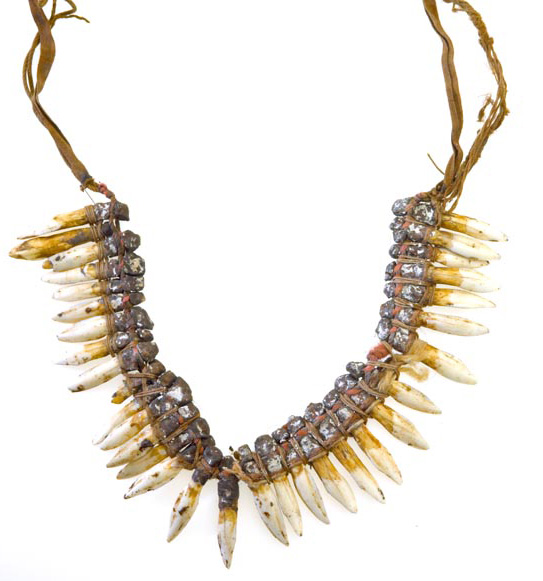 Forehead ornament, c1916
Forehead ornament, c1916
TLF ID R6685
This is an Aboriginal forehead ornament from the Northern Territory, believed to have been made in the early 1900s. It comprises more than 30 kangaroo teeth, each embedded in beeswax and then attached to a string. Lengths of string extend out at both ends of the ornament. The ornament is 45 cm long and 9.5 cm wide.
